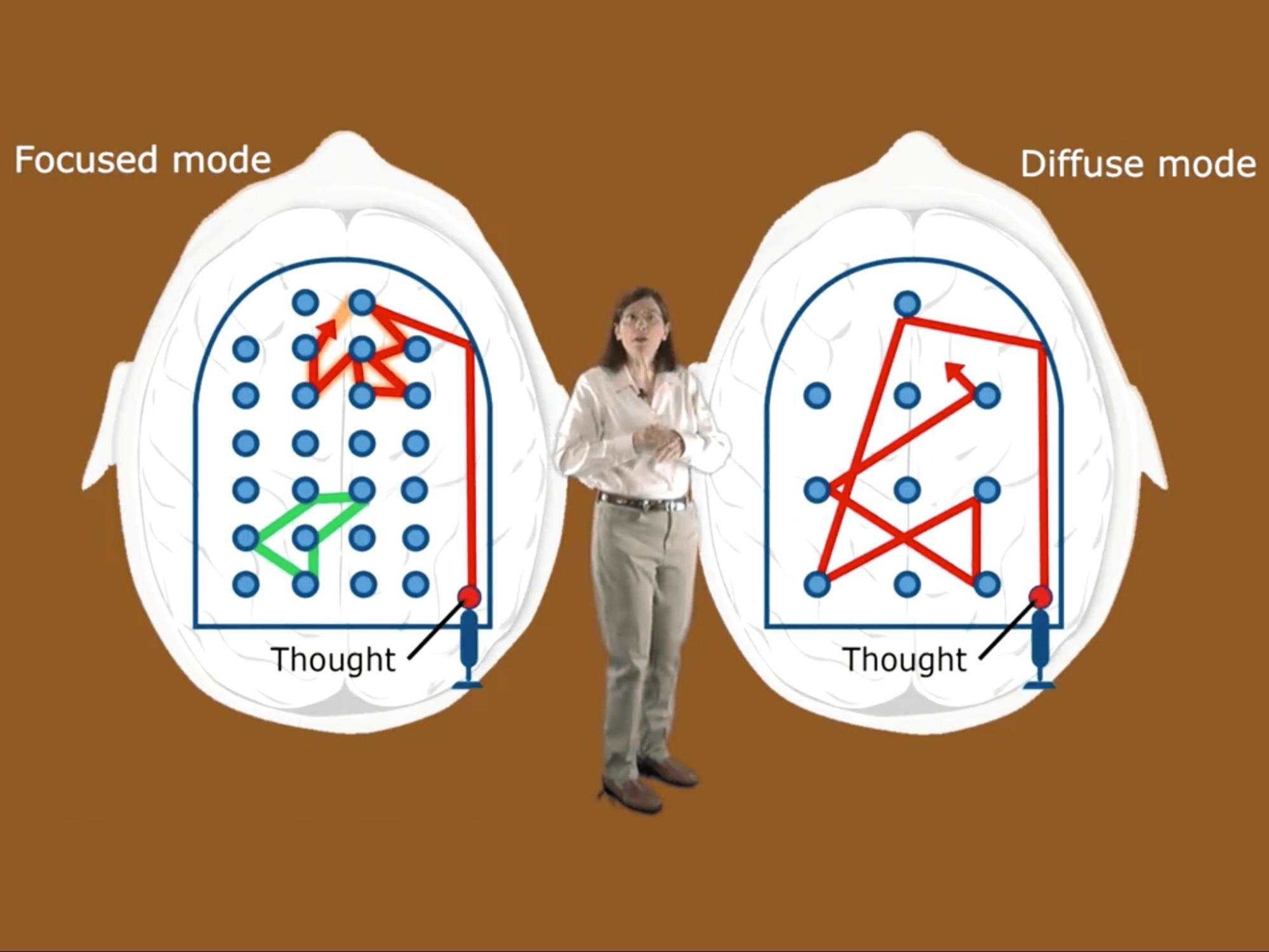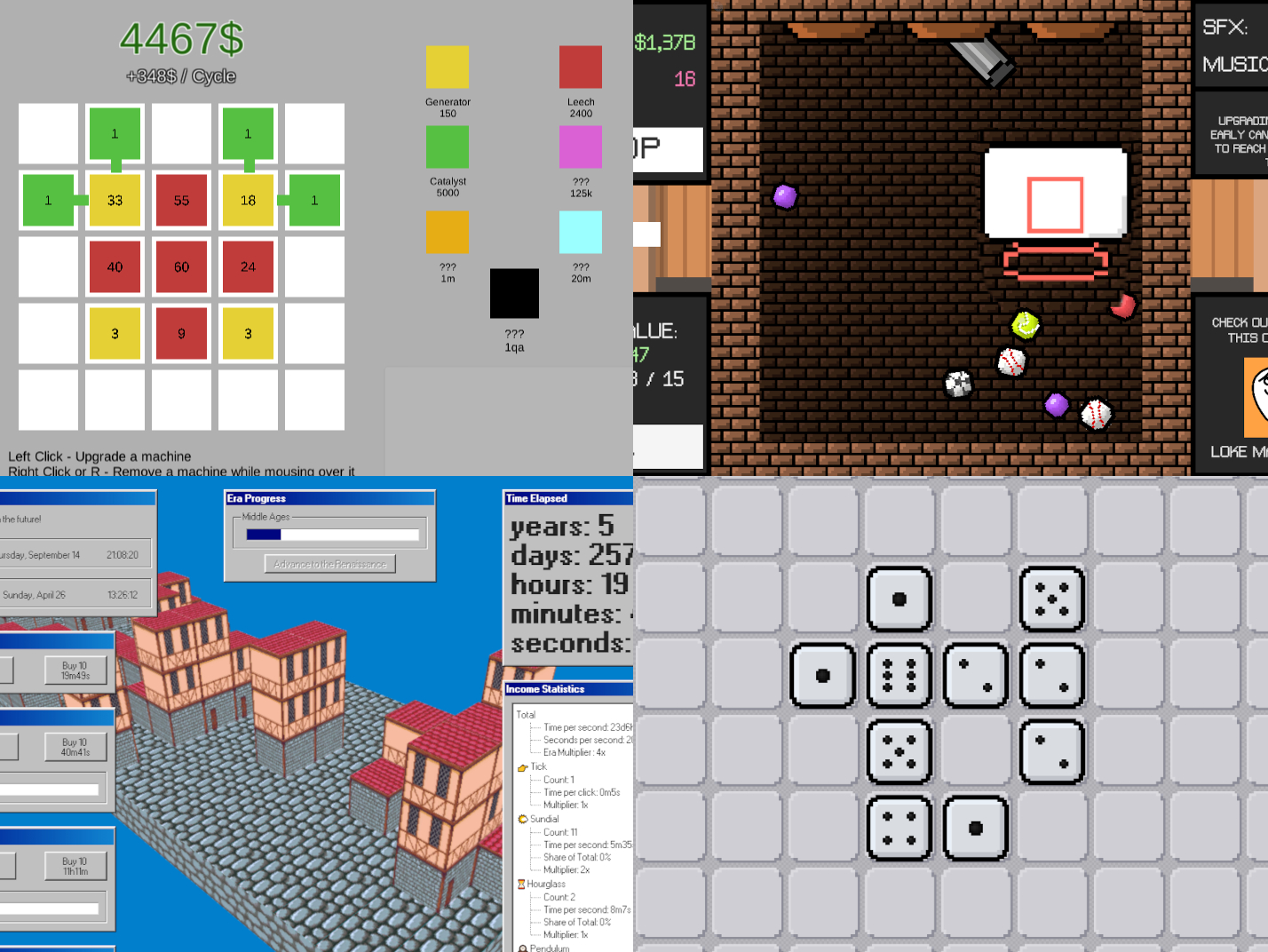SDMAs: why you should be playing browser games at work
What if the most effective productivity app wasn't a to-do list, or a pomodoro timer, but a browser game designed to be ignored?
It was maybe a year ago I discovered itch.io - a kind of indie game app store where game devs soft-launch prototypes to market test them in a low-stakes market. Many itch.io games go on to become "overnight" successes, some worth millions of dollars.
Many don't, however. These are the ones I am in love with: free to play browser games so simple, so unpolished, you can play one through from start to finish in half an hour - and, specifically, idle games, games that "play themselves" in the background. There are literally thousands of these, and I want to show you why they are the perfect productivity tool.
 Search results for idle browser games on itch.io
Search results for idle browser games on itch.io
And, if you're one of the ones that's already figured out this little productivity hack, I want to show you why you shouldn't feel guilty about it.
I want to introduce you to the concept of the "structured diffuse mode activity" or SDMA.
Doomscrolling
Let's dive right into the psychology. When you're at your desk working away on something that requires a lot of focus, your brain will eventually need a "cognitive rest", in a process psychologists call attention restoration .
Attention restoration is a biological imperative. It is as necessary as sleep. Your brain will make you take that break whether you want it to or not. The alternative is directed attention fatigue - an acute condition also known as "brain fog", or, in other words, what you're dealing with when you find yourself referring to your brain as "fried" or "scrambled".
 Someone sitting in a park in the sunshine checks their social media on their smartphone
Someone sitting in a park in the sunshine checks their social media on their smartphone
Many of us "instinctively" fill that cognitive break with social media. This is entirely understandable: what social media does is called an intermittent reinforcement loop. When you're doomscrolling, you greatly enjoy some of the things you see, and you outright hate others: because the dopaminergic reward isn't guaranteed, you chase it harder. You might already know this as the "just one more" loop - it is in fact how most addictions work as well.
What this means is that, when you get back to your focussed work, you're fundamentally unsatisfied. Part of you is still on the app you've just closed. In the words of psychologist Sophie Leroy , you have accumulated attention residue , and you go back to work with your mind more cluttered than when you stopped.
This is, in other words, the least optimal way to take a cognitive rest. Specifically what's lacking is two things: first, the guaranteed and predictable dopamine response; and, second, the natural stopping point. You need something that is designed to engage your attention but not to hold it. What would that look like?
Diffuse Mode
Barbara Oakley of Learning How to Learn describes two thinking modes:
- Focused mode (deep work, problem-solving).
- Diffuse mode (background processing, creativity, rest).
 Barbara Oakley with a visual metaphor for the difference between focussed and diffuse modes
Barbara Oakley with a visual metaphor for the difference between focussed and diffuse modes
Diffuse mode is what happens when you step away from a problem and let your mind wander. It's why you get your best ideas in the shower, or while taking a walk. Your brain is still working, just not in a directed, effortful way.
Now, taking a shower or a walk - or a nap - is a great way to give yourself a cognitive rest, but what if you need a cognitive rest that lasts no longer than, say, five minutes? What if there were an activity you could do that provided just enough engagement to occupy the part of your brain that craves distraction, while leaving the rest free simply to stop for a moment?
That would be the optimal way to take a cognitive rest. And you can do it right now:
- Go to itch.io
- Hit Browser Games on the left
- Enter " idle " in the tags search
- Pick one you like the look of and play it!
If that's an embarrassment of riches for you, why not try some of my personal favourites:
- Gridle by Parsakaali
- The Ballpit by Loke Makes Games
- Time is Money by https://piesku.itch.io/time-is-money
- Pip Factory by Sean Nikkel
 Gameplay screenshots of Gridle, The Ballpit, Time is Money, and Pip Factory
Gameplay screenshots of Gridle, The Ballpit, Time is Money, and Pip Factory
What you're doing here is engaging in what I call a "structured diffuse mode activity" or SDMA. SDMAs are not only effective at giving your brain a rest (to say nothing of the overwhelmingly positive impacts of getting off social media), they are also surprisingly effective at maintaining, and even improving, productive focussed work - because they vent the brain fog and give your unconscious a chance to have a crack at what you're working on.
Idle games in particular are perfect for this, for a couple of reasons. First, they have a natural " break" point . When you've pushed the numbers up as far as you can, and you encounter resistance, the best way to play the game is to step away from it and let it run in the background. This is when you jump back on your focussed work.
Second, they are minimally engaging. There is no storyline, there is no mining or crafting, no strategy. You hit buttons and numbers go up. I've tried to explain why I love these games to people so many times, but no-one ever seems to get it: they require just enough prefrontal cortex activity to make them interesting, and no more. Requisite headspace is minimised.
Finally, and most importantly: they're low stakes, and they're predictable. Once you've played a game like Gridle through to completion once, every subsequent game will look substantially the same. There is no "just one more". To put it another way, you're replacing intermittent reinforcement with positive reinforcement - which has the added side benefit of making these games less addictive than social media.
SDMAs in Practice
I'll level with you: I am a champion for tiny idle games for this purpose, but there are lots of things that make good SDMAs. Software engineers have known about this trick forever. I've seen devs do sudokus, crosswords, chess puzzles. There are dev teams out there with jigsaw puzzles on their desks. I've worked on desks with lego on them.
I like games like Gridle because you can make meaningful progress and hit the natural resistance all in a space of ten seconds - this is the real microdosing approach - but there are plenty of SDMAs that take you away from the desk, which can be useful too.
It's common to see arcade machines, pinball machines in tech offices. Lots of firms like the multiplayer ones like table football and air hockey. Lots of devs smoke - and, often, the ones that don't will just join us outside anyway.
 Margo Madison plays the piano in her office in For All Mankind
Margo Madison plays the piano in her office in For All Mankind
I'm a pianist, so of course I have a piano in my home office, just like Margo Madison from For All Mankind or indeed Michael Burry in The Big Short with his drum kit. The point is an SDMA needs to be something easy for the participant, engaging enough to dispel boredom but not engaging enough to be taxing.
Most importantly of all, it needs to have natural "break" points built in. You get one more number in place on your sudoku grid and you go back to work. You play a single round of pinball and you go back to work. If you can find an activity that gives you that same basic engagement coupled with that natural resistance, then you've found something incredibly valuable.
SDMAs work with your biological rhythms rather than against them. These kinds of cognitive breaks make you more focussed, not less. Above all, SDMAs replace harmful habits - i.e. social media, or smoking for that matter - with neutral ones. They might not be healthy habits, but they are more healthy than the alternatives. What you're looking for is a fidget spinner for your prefrontal cortex.
Give it a go and see if you notice a difference in your own productivity and general wellbeing. And when your boss inevitably walks past and stops to ask you what the hell you're doing playing games at work, just tell them it's an SDMA - it's the new productivity hack, haven't you heard?